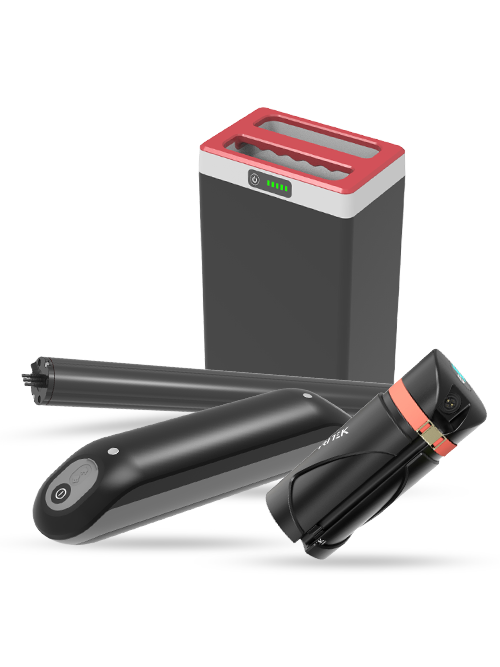Over the past few years, lithium-ion batteries have become an essential part of consumer electronics. Lithium-ion batteries are rechargeable, portable, low discharge, and have a longer shelf life.
Your lithium battery may not charge due to BMS failure, a faulty charger, deep discharge, cable damage, or cell degradation. Identifying the cause helps determine whether you need repair, replacement, or professional support.
What Makes Lithium-ion Batteries Die?
Lithium-ion batteries have a reputation for extended shelf life. Still, some factors can reduce the life of your battery. Let us show you a checklist of technical negligence that could affect the performance of your lithium-ion battery.
1. Wrong Voltage
Lithium batteries are sensitive to the amount of voltage. If you’re charging your battery at a higher-than-recommended voltage, your battery will be overheated while charging. If the voltage is too low, your lithium battery will start to lose its charging capacity and will not charge after a while.
2. Extreme Temperature Changes
High and low temperatures are detrimental to the longevity of rechargeable batteries. Suppose you expose your lithium battery to freezing or blazing high temperatures. In that case, there’s a high chance that your battery will not last for a long time. Extreme temperature changes affect the chemical structure of lithium-ion batteries. Hence, it affects the efficiency of a battery.
Some guidance for Winter-Proofing Your Electric Bike.
3. Shelf Life
Lithium-ion batteries are undoubtedly durable and can last a long time. Still, they also have a shelf life, like other electric appliances. Recurrent recharging sessions affect the durability of a battery. If you have been using your lithium battery for ages, maybe it’s worn out, and you should get a new one.
—->Wanna know How Many Charging Cycles Can You Expect?<—-
4. Mechanical Stress
The negative electrodes of a lithium-ion battery go through expansion and contraction during the charging and discharging process. This expansion and contraction phenomenon breaks down the anode over time. If you are habitual in using your battery for long sessions. In that case, a high mechanical load could lead to a battery failure.
Common Lithium-ion Battery Troubleshooting Tips
If you are willing to take proper care of your batteries, stay with us and learn practical troubleshooting tips.
A) Lithium Battery not Charging Causes
In this scenario, your device is connected to the power supply but is not charging. There can be a few reasons which can affect charging.
1. Faulty charger
If your battery is not charging despite being connected to a power source, you must check your battery charger. Get a new lithium-ion battery charger and check if the battery is charging with the alternative charger or not.
If the new charger fails to revive your battery, it is time to consider other causes of battery failure.
Looking for high-efficiency industrial chargers? Explore Tritek’s chargers from 160W to 2000W for LEVs, robotics, and commercial use.
| Product model | TC1001 | TC1012-02 / TC1012-21 | TC1033 | TC1018-03 | TC1028 | TC1032 | TC1030 | TC1031 |
|---|---|---|---|---|---|---|---|---|
| Photo | 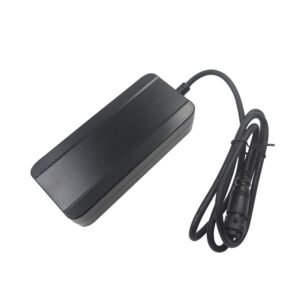 |  | 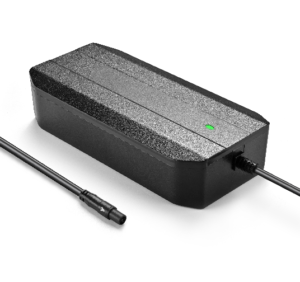 | 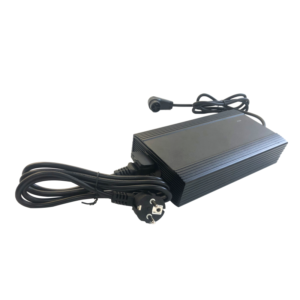 |  | 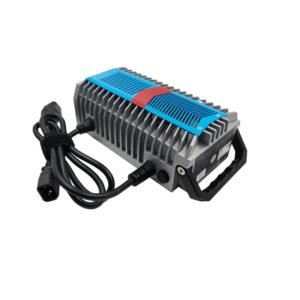 | 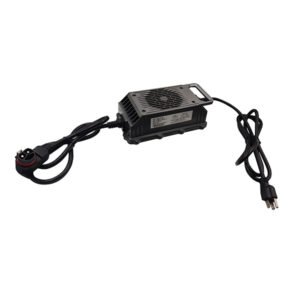 |  |
| Output voltage | 42.05±0.15V | 54.6±0.2V / 42±0.2V | 54.6±0.2V / 42±0.2V | 58.8V | 48-58.6V | 40-58.8V | 72-84V | 48-58.6V |
| Charge current | 2.0±0.2A | 3.0±0.3A | 6.0±0.4A | 9A | 15A | 20A | 15A | 25A |
| Rated output power | 84W | 168W | 328W | 529.2W | 840W | 1200W | 1200W | 1200W |
| Fit for battery of | 10S NCM | 10S, 13S NCM 13S , 15S LFP | 10S, 13S NCM 13S, 15S LFP | 14S NCM 16S LFP | 12-14S NCM 14-16S LFP | 14S NCM 16S LFP | 17-20S NCM 23-24S LFP | 12-14S NCM 14-16S LFP |
| Material housing | Plastic | Plastic | Plastic | Aluminum | Aluminum | Aluminum | Aluminum | Aluminum |
| Cooling mode | Natural heat dissipation | Natural heat dissipation | Natural heat dissipation | Glued inside with fan | Full closed with fan outside,Glued inside | Fan outside,Glued inside | Full closed with fan outside,Glued inside | Full closed with fan outside,Glued inside |
| Dimension | 147*65.5*34.2mm | 159.4*81.1*33.9mm | 220*106*51mm | 220*120*49mm | 195*142*62mm | 252×141.8×86.4mm | 252.5*160*82.5mm | 252.5*160*82.5mm |
| IP rating | IP20 | IP20 | IP40 | IP54 | IP67 | IP66 | IP65 | IP65 |
| Certification | UL, GS, CE, RCM, KC, PSE, FCC, CE, C-TICK, KCC | CE:EN60335-1, EN60335-2-29, CE:EN55014-1/2, EN610003-3/2, FCC:FCC Part15B | CB,CE,FCC | CB, CE, FCC | UL, CB, CE | CE、FCC | UL, CB, CE | UL, CB, CE |
2. BMS failure
The term BMS stands for “Battery Management System.” You know that lithium-ion batteries are widely used in consumer electronics. These electronics have apps and software to run each component of devices. No charger could charge your battery if your battery management app is affected by a virus, outdated, or corrupted. You might need to take your battery to the service center to update your BMS.
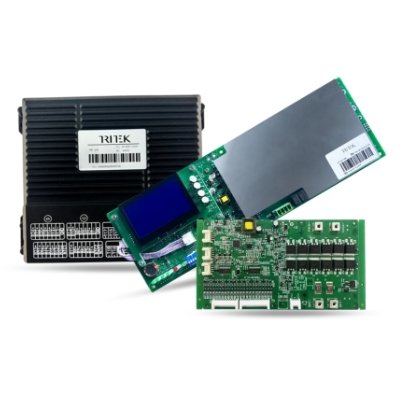
3. Charge / Discharge cable damage
Lithium-ion batteries have charging components, and any damaged part could affect the functionality of your battery. You can also call it a hardware failure.
Check the Charge/Discharge cable. If any cable is damaged, replace it and recharge the battery. Or to check the cable with multimeter measurement if a charger is eliminated. Solution: replace the cable or re-solder the red and black wires.
4. Reduced Battery Power
Cells are deeply discharged. This happens with batteries that are not maintained correctly.
If there wasn’t any charging record after some period of time. The remaining capacity is also 0 since then. In the end, the cell voltage is below 1500mv, and the “ cell invalid alarm “ is triggered. Under this situation, the discharge MOS and charge MOS turn off to avoid any severe danger. And the battery can not be recovered.
Lithium batteries have long battery life in comparison to conventional lead batteries. Researchers at SLAC found that during the lifetime, the clusters of inactive lithium-ion cells get discharged from the anode, thus affecting the capacity of a battery. The lithium electrode degradation process can only be reversed by connecting the inactive lithium molecules to the electrodes.
If you have an old battery and it is not storing charge up to full capacity, lost lithium molecules can be the culprit in your case. Abnormally high concentrations of inactive lithium cells can make a battery completely dead. For that reason, old batteries are hard to revive.
If you cannot repair your damaged battery in any other cases of hardware or software failures. Getting your battery to the service center to fix the broken part is the best solution.
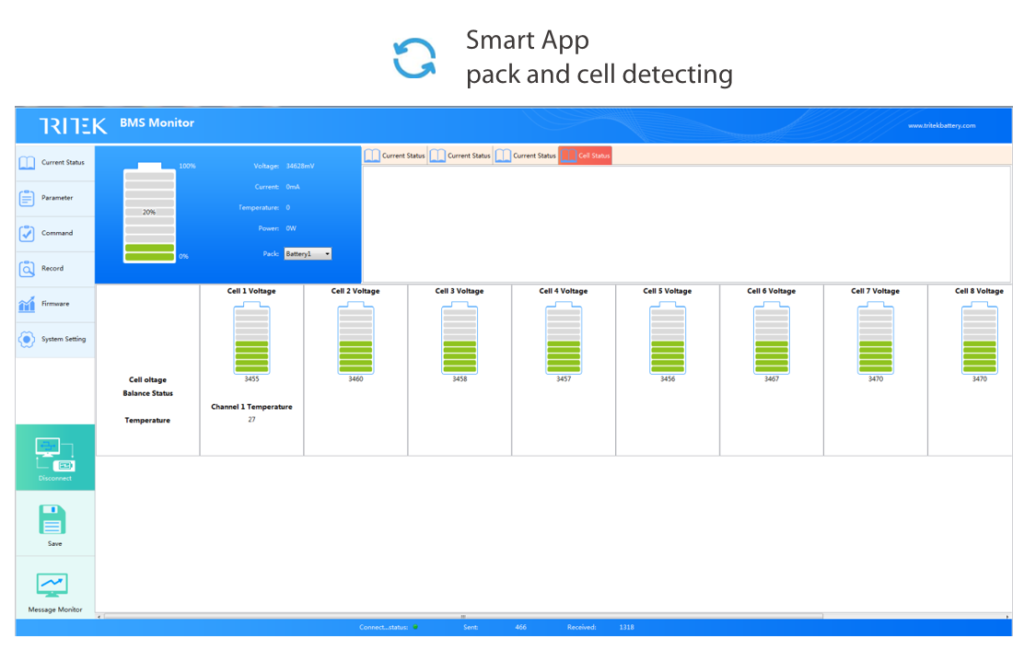
Roadmap to Revive Your Li-ion Battery
If your lithium battery is not picking up the charge, you can do a few things to revive your battery.
- If your lithium-ion battery has been sitting idle for a long time and now is not picking up the electric current, you can use a low-volt charger. For example, a 48V/20A charger for a 60V/20A battery is a good choice for an idle battery. The slow introduction of the nominal charge revives the battery without a jolt.
- Low-voltage chargers will take a longer time to charge your battery. We suggest you charge your battery up to 80-90% at the low-voltage charger. Once your battery gets charged to the maximum percentage. Please give your lithium battery rest for a couple of hours before using it so that the chemical components of the battery can settle down. During the first use after revival, monitor the discharge rate of your battery to detect any abnormal consumption.
How can I Identify if my Device Needs a New Battery or a New Charger?
In such a case, you need to observe your device. Check the display panel, which shows the charging status of your device. Suppose your battery does not show any activity while connected to a charger. In that case, there is a high chance that the device may need a new battery.
If your device has slow charging or the charger keeps on getting disconnected, it is time to buy a new charger. If your charger has a separate adapter and a USB cable, you can test both of these parts to confirm which one of these needs to be replaced.

What are Safety Guidelines While Working on a Dead Lithium-ion Battery?
Lithium batteries are generally safe to work with but remember that you are working with a battery that isn’t functioning correctly. To be on the safer side, here are some great safety guidelines you can follow.
- Observe your battery from all sides before you start the revival operation. If your battery is physically damaged or deformed, do not try to be a DIY specialist, and take it to the service center.
- If the battery passes the physical exam, get yourself a pair of safety gloves. Remember that your battery has chemicals inside, and you do not want to touch them accidentally.
- Do not try to open your battery to see what’s inside it. Li-ion batteries have a thin polypropylene layer between the electrodes, preventing short-circuiting. Damaging any component could result in the leakage of poisonous chemicals and cause a fire.
- Do not keep flammable objects near the place you are working with your battery. Lithium is a highly reactive and explosive material if mishandled.
- Choose a place with good airflow and ventilation to avoid thermal runaway. However, lithium batteries do not release gases like most batteries. Still, it is always better to be safe than sorry.
- Do not leave your battery unattended during the boost charging. It is time to abort the revival mission if your battery gets heated or smells burnt. A burning smell is a clue to a short circuit.
You can take your lithium batteries to the nearest mechanic for expert and pocket-friendly advice. However, suppose the mechanic also fails to revive your battery. In that case, your last hope is to take your lithium batteries to the service center.
Final Thoughts
Your lithium battery won’t charge for several reasons: charger failure, BMS failure, no proper maintenance, etc. Lithium batteries become dead or go into hibernate mode if drained completely. For example, if you will not use your device for a long time, it is recommended to have at least 50% charge in your battery and charge it every three months fully. The 50% charge trick will keep your lithium battery alive.
Tritek offers a one-stop battery solution for OEMs, fleet operators, and system integrators — from BMS to battery to smart charger. Contact us for a free consultation.


